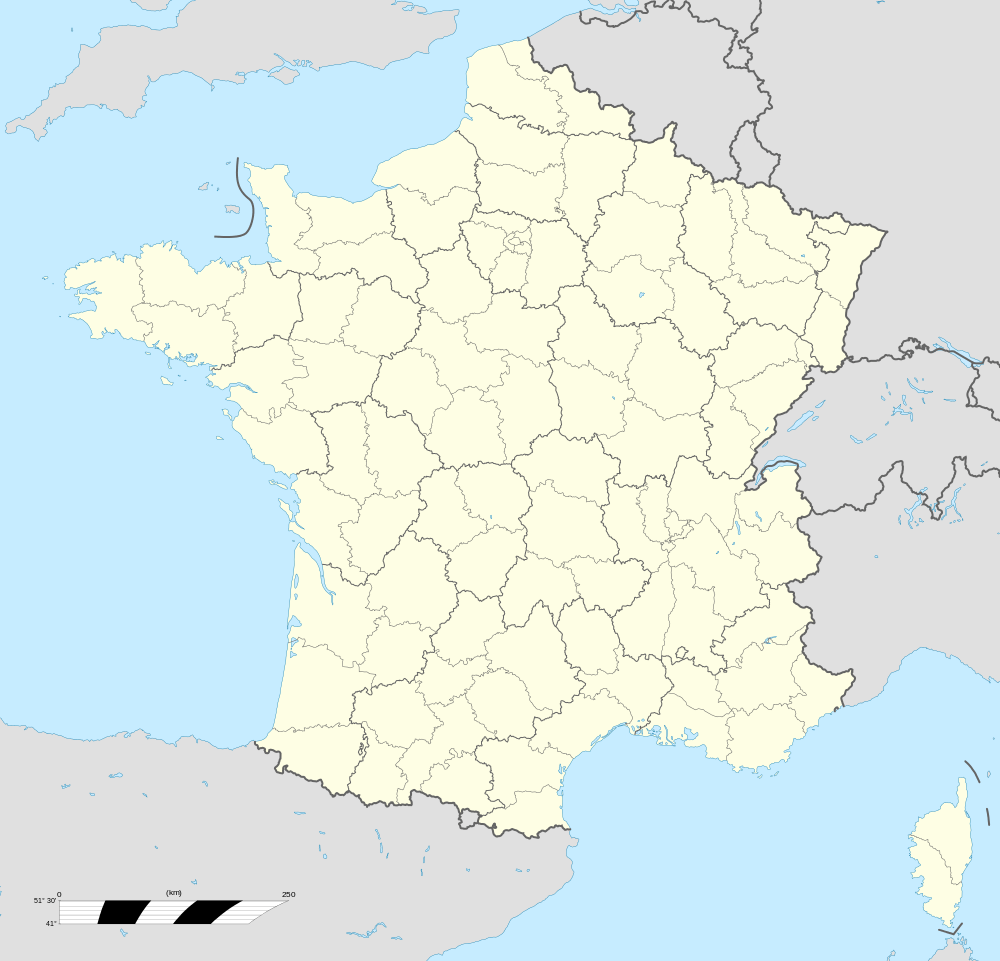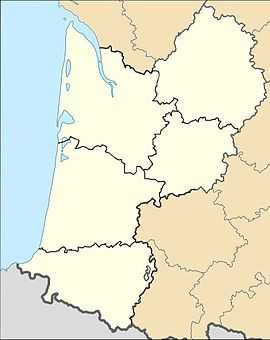Libourne
| Libourne | ||
|---|---|---|
|
Town hall | ||
| ||
 Libourne | ||
|
Location within Aquitaine region  Libourne | ||
| Coordinates: 44°55′N 0°14′W / 44.92°N 0.24°WCoordinates: 44°55′N 0°14′W / 44.92°N 0.24°W | ||
| Country | France | |
| Region | Aquitaine | |
| Department | Gironde | |
| Arrondissement | Libourne | |
| Canton | Libourne | |
| Intercommunality | Libournais | |
| Government | ||
| • Mayor (2008–2014) | Gilbert Mitterrand (PS) | |
| Area1 | 20.63 km2 (7.97 sq mi) | |
| Population (2008)2 | 23,725 | |
| • Density | 1,200/km2 (3,000/sq mi) | |
| INSEE/Postal code | 33243 / 33600 | |
| Elevation |
2–28 m (6.6–91.9 ft) (avg. 15 m or 49 ft) | |
|
1 French Land Register data, which excludes lakes, ponds, glaciers > 1 km² (0.386 sq mi or 247 acres) and river estuaries. 2 Population without double counting: residents of multiple communes (e.g., students and military personnel) only counted once. | ||
Libourne (Gascon Liborna) is a commune in the Gironde department in Aquitaine in southwestern France. It is a sub-prefecture of the department.
It is the wine-making capital of northern Gironde and lies near Saint-Émilion and Pomerol.

Geography
Libourne is located at the confluence of the Isle and Dordogne rivers.
History
In 1270, Leybornia was founded as a bastide by Roger de Leybourne (of Kent), an English seneschal of Gascony, under the authority of King Edward I of England. It suffered considerably in the struggles of the French and English for the possession of Gironde in the 14th century, and joined France in the 15th century.
Population
| Historical population | ||
|---|---|---|
| Year | Pop. | ±% |
| 1793 | 9,100 | — |
| 1800 | 8,076 | −11.3% |
| 1806 | 8,293 | +2.7% |
| 1821 | 8,787 | +6.0% |
| 1831 | 9,838 | +12.0% |
| 1836 | 9,714 | −1.3% |
| 1841 | 9,814 | +1.0% |
| 1846 | 11,813 | +20.4% |
| 1851 | 12,650 | +7.1% |
| 1856 | 13,290 | +5.1% |
| 1861 | 13,565 | +2.1% |
| 1866 | 14,639 | +7.9% |
| 1872 | 14,960 | +2.2% |
| 1876 | 15,231 | +1.8% |
| 1881 | 15,981 | +4.9% |
| 1886 | 16,736 | +4.7% |
| 1891 | 17,867 | +6.8% |
| 1896 | 18,016 | +0.8% |
| 1901 | 19,175 | +6.4% |
| 1906 | 19,323 | +0.8% |
| 1911 | 20,085 | +3.9% |
| 1921 | 18,083 | −10.0% |
| 1926 | 18,453 | +2.0% |
| 1931 | 19,103 | +3.5% |
| 1936 | 19,491 | +2.0% |
| 1946 | 20,166 | +3.5% |
| 1954 | 19,474 | −3.4% |
| 1962 | 19,834 | +1.8% |
| 1968 | 22,123 | +11.5% |
| 1975 | 21,651 | −2.1% |
| 1982 | 22,119 | +2.2% |
| 1990 | 21,012 | −5.0% |
| 1999 | 21,764 | +3.6% |
| 2008 | 23,725 | +9.0% |
Sights
The Gothic church, restored in the 19th century, has a stone spire 232 ft (71 m) high. On the quay there is a machicolated clock-tower which is a survival of the defensive walls of the 14th century; and the town-house, containing a small museum and a library, is a quaint relic of the 16th century. It is located by the main square, the Place Abel Surchamp, which hosts every week end one of the largest fresh food market in the region. There is a statue of Élie, duc Decazes, who was born in the neighborhood.
See also
- Hull town walls, the town of Hull, also established under Edward I, is said to have been similar in design to the Bastides, in particular Libourne
- Communes of the Gironde department
- Keynsham, twinned with Libourne
References
External links
| Wikimedia Commons has media related to Libourne. |
| Wikisource has the text of the 1911 Encyclopædia Britannica article Libourne. |
- Official website (in French)
- Unofficial website (in French)

.svg.png)